Cinnamon Sugar Brioche Donuts
These brioche donuts are what happens when you take a really good bread dough and fry it to golden perfection. The brioche base makes them lighter and more tender than regular cake donuts, with a subtle buttery richness that plain yeasted dough just doesn’t have.
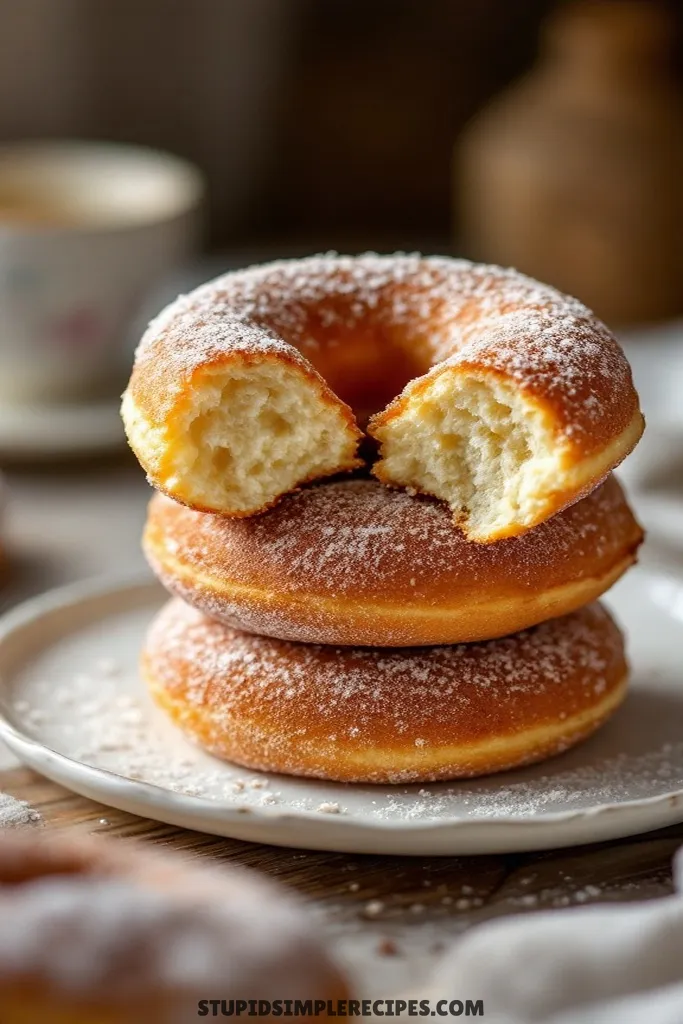
Rolling them in cinnamon sugar while they’re still warm creates this delicate, sweet crust that melts in your mouth. They’re perfect for weekend mornings when you’ve got time to let the dough rise properly – rushing brioche never ends well.
While they take some planning ahead, the actual hands-on work isn’t complicated. Just remember that these are best eaten the same day, ideally while they’re still slightly warm.
What You Need For Cinnamon Sugar Brioche Donuts
FOR Dough:
- 4 cups all-purpose flour
- 1/3 cup granulated sugar
- 2¼ teaspoons active dry yeast
- 1 teaspoon salt
- 4 large eggs, room temperature
- ½ cup warm whole milk
- ¾ cup unsalted butter softened
- Vegetable oil for frying
For Cinnamon Sugar Coating:
- 1 cup granulated sugar
- 2 tablespoons ground cinnamon
How to make Cinnamon Sugar Brioche Donuts
1. Start by activating your yeast – warm the milk until it’s just warm to the touch (around 110°F – if it’s too hot, it’ll kill the yeast). Stir in a pinch of the sugar and the yeast. Let it sit for about 5-10 minutes until it gets foamy and smells like bread. If it doesn’t foam up, your yeast might be dead and you’ll need to start over.
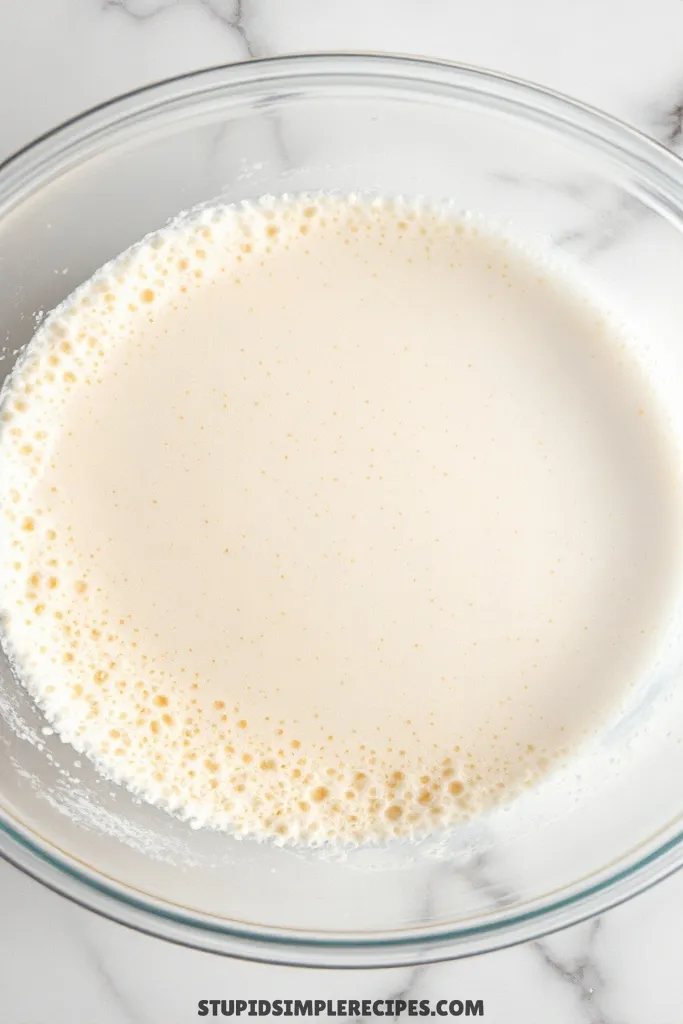
2. While the yeast is doing its thing, mix your flour, remaining sugar, and salt in the bowl of a stand mixer. Once the yeast mixture is ready, add it to the bowl along with your room temperature eggs. Using the dough hook, mix on low speed until everything starts coming together – about 2-3 minutes.
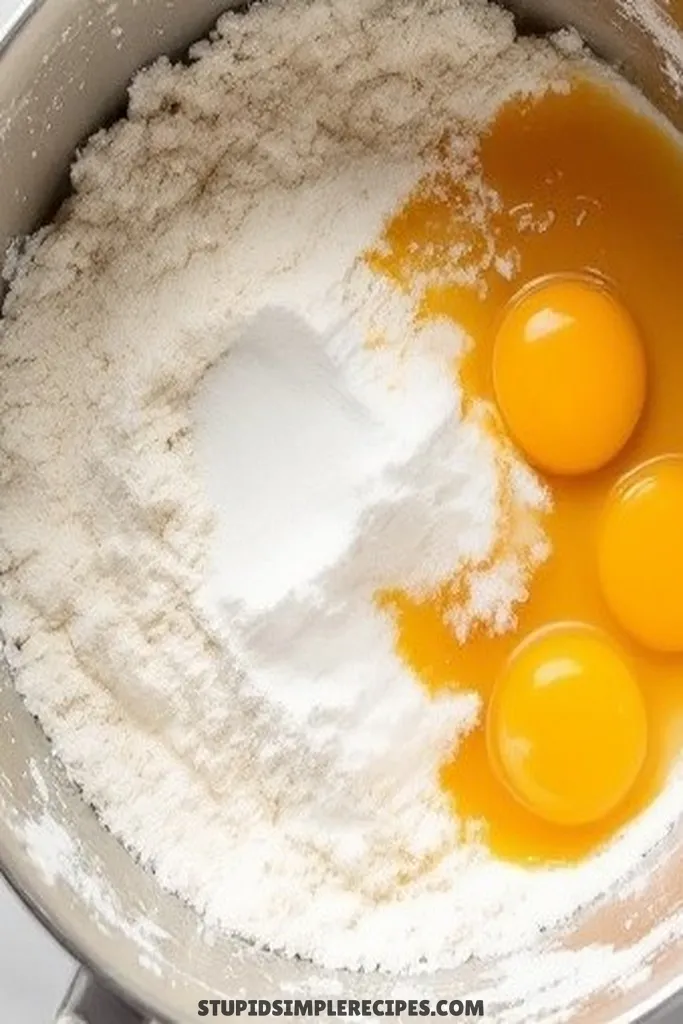
3. Now comes the butter – this is where patience pays off. With the mixer running on medium-low, add the softened butter about a tablespoon at a time. Wait until each piece is fully incorporated before adding the next. This’ll take about 5-6 minutes. The dough will look like a mess at first, but keep going – it’ll come together.
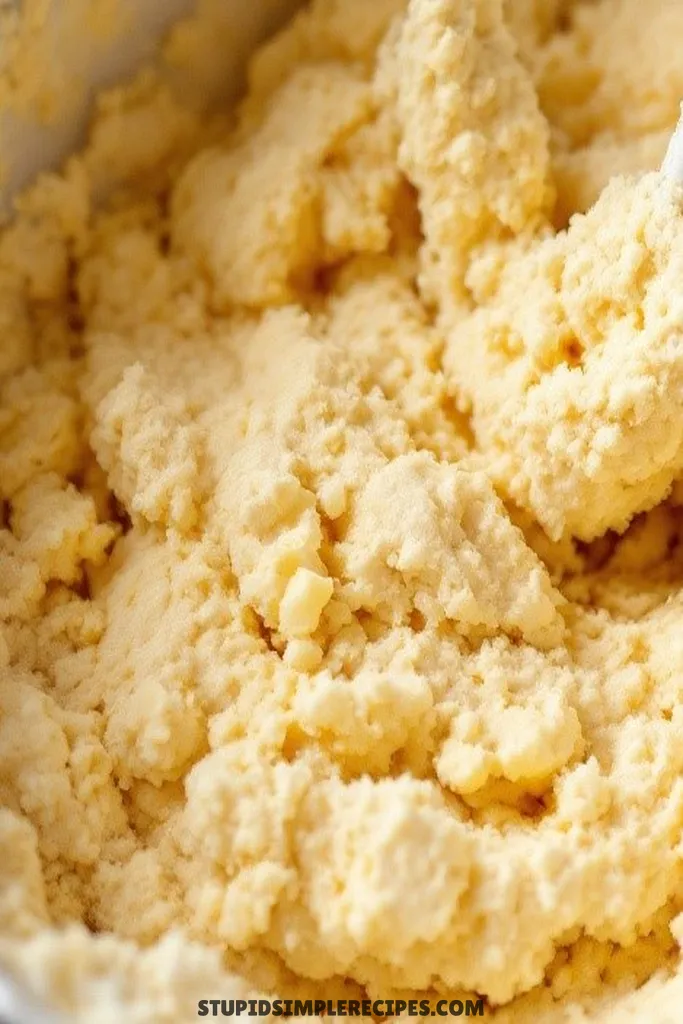
4. Once all the butter is in, turn the speed up to medium and knead for about 8-10 minutes. You’re looking for a soft, shiny dough that pulls away from the sides of the bowl and passes the windowpane test – grab a small piece and stretch it gently; you should be able to stretch it thin enough to see light through it without it breaking.
5. Place the dough in a lightly greased bowl, cover with plastic wrap, and let it rise until doubled – about 1½ hours in a warm spot. The dough should feel puffy and spring back slowly when you poke it.
6. Punch down the dough and turn it onto a lightly floured surface. Roll it out to about ½-inch thickness. Using a 3-inch round cutter and a 1-inch cutter for the holes, cut out your donuts. Place them on parchment-lined baking sheets, leaving some space between each.
7. Cover the donuts loosely with plastic wrap and let them rise again until they’re puffy and nearly doubled about 30-45 minutes. They should look light and airy, and when you gently poke one, the indentation should slowly fill back in.
8. While they’re rising, heat your oil in a heavy-bottomed pot or Dutch oven to 350°F. Use a thermometer here – temperature control is crucial. Too cool and they’ll be greasy, too hot and they’ll burn outside while staying raw inside.
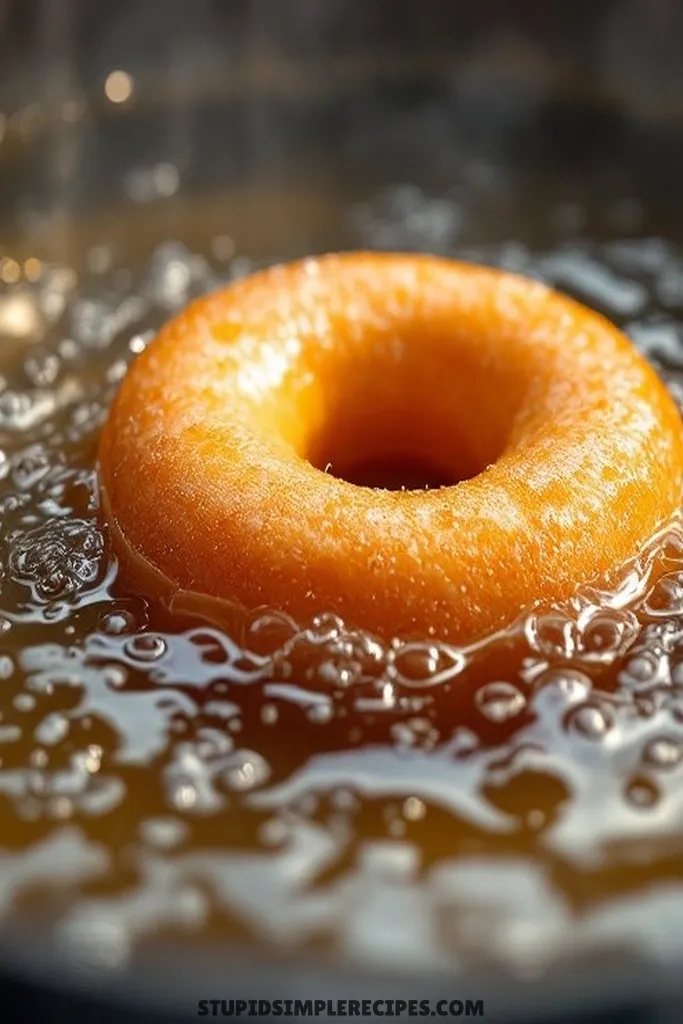
9. Mix your cinnamon and sugar in a shallow bowl and set aside.
10. When the oil is ready, carefully lower 2-3 donuts into the oil (don’t crowd the pot). They should float to the surface almost immediately. Fry for about 1½-2 minutes per side, or until they’re a deep golden brown. Use a slotted spoon to flip them – you’ll see a pale line around the middle when it’s time to turn.
11. Remove the donuts with a slotted spoon and let them drain on paper towels for about 30 seconds – just long enough for the excess oil to drip off but while they’re still hot enough for the sugar to stick.
12. Toss the warm donuts in the cinnamon sugar mixture until well coated. The sugar should stick easily to the hot surface. Place on a wire rack to cool completely – if you can wait that long!
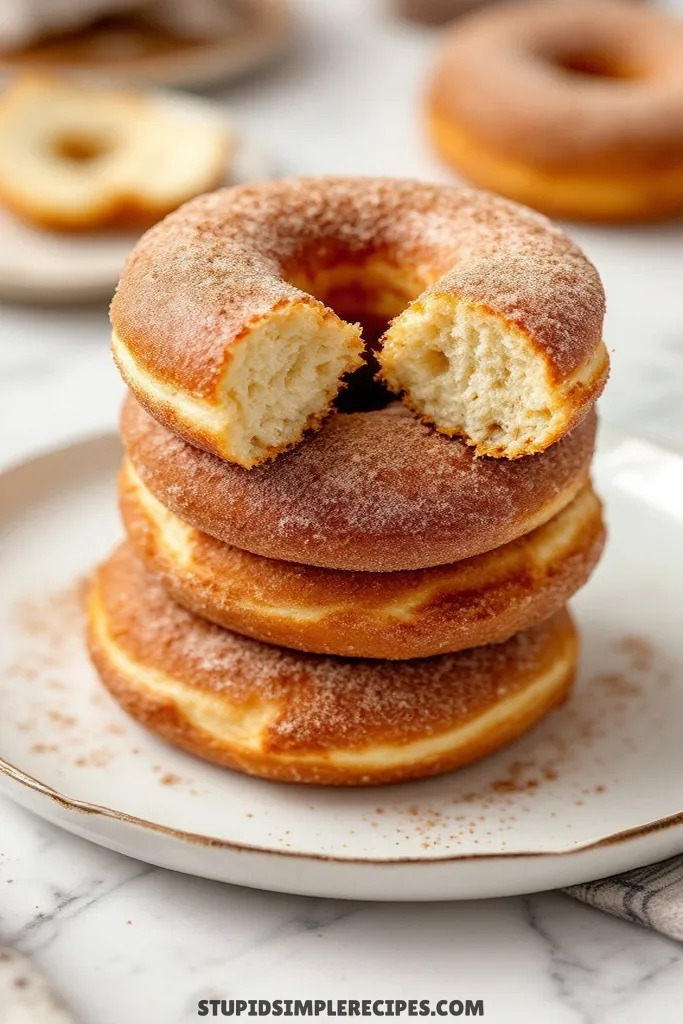
The donuts are best eaten the same day, still slightly warm. You’ll know they’re cooked properly when you break one open and see a light, fluffy interior with small, even air holes throughout.
🔍 Recipe Notes & Tips
- Don’t rush the butter mixing – cold or rushed butter = tough donuts
- If your kitchen’s cold, create a warm spot by preheating the oven to the lowest setting, and then turning off
- No stand mixer? You can hand knead but expect 15-20 mins of work
- Oil temperature is crucial – grab a thermometer, seriously
- Save donut holes! Fry them too – they make perfect snack-size treats
- Want extra insurance? Test-fry one donut first before doing the batch
🍽️ Serving Suggestions
- Coffee pairings: hot coffee, cappuccino, or cold brew
- Hot chocolate for kids (or kids at heart)
- A glass of cold milk = a classic combo
- Serve on a platter with other breakfast items for brunch
- Pro move: warm slightly before serving if they’ve cooled
🎯 Make it Work for
- Weekend brunch hero – make fresh Sunday morning
- Holiday breakfast – prep dough the night before, fry the morning of
- Bake sale winner – package individually in paper bags
- Breakfast potluck – bring them warm in a covered basket
- Kids’ sleepover breakfast – let them help with sugar-coating
📦 Storage & Leftovers
- Best eaten same day within 6-8 hours
- Store at room temp in a paper bag for up to 24 hours
- Can freeze unfried dough for up to 1 month
- Avoid plastic containers – makes them soggy
- Quick refresh: 10 seconds in the microwave before eating
- Day-old donuts? Slice and make French toast!
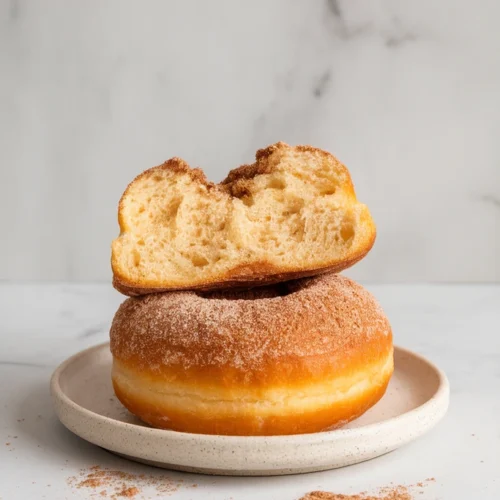
Cinnamon Sugar Brioche Donuts
Ingredients
Dough:
- 4 cups all-purpose flour
- 1/3 cup granulated sugar
- 2¼ teaspoons active dry yeast
- 1 teaspoon salt
- 4 large eggs room temperature
- ½ cup warm whole milk
- ¾ cup unsalted butter softened
- Vegetable oil for frying
Cinnamon Sugar Coating:
- 1 cup granulated sugar
- 2 tablespoons ground cinnamon
Instructions
- Start by activating your yeast – warm the milk until it’s just warm to the touch. Stir in a pinch of the sugar and the yeast. Let it sit for about 5-10 minutes until it gets foamy and smells like bread. If it doesn’t foam up, your yeast might be dead and you’ll need to start over.
- While the yeast is doing its thing, mix your flour, remaining sugar, and salt in the bowl of a stand mixer. Once the yeast mixture is ready, add it to the bowl along with your room temperature eggs. Using the dough hook, mix on low speed until everything starts coming together – about 2-3 minutes.
- Now comes the butter – this is where patience pays off. With the mixer running on medium-low, add the softened butter about a tablespoon at a time. Wait until each piece is fully incorporated before adding the next. This’ll take about 5-6 minutes.
- Once all the butter is in, turn the speed up to medium and knead for about 8-10 minutes. Grab a small piece and stretch it gently; you should be able to stretch it thin enough to see light through it without it breaking.
- Place the dough in a lightly greased bowl, cover with plastic wrap, and let it rise until doubled – about 1½ hours in a warm spot. The dough should feel puffy and spring back slowly when you poke it.
- Punch down the dough and turn it onto a lightly floured surface. Roll it out to about ½-inch thickness. Using a 3-inch round cutter and a 1-inch cutter for the holes, cut out your donuts. Place them on parchment-lined baking sheets, leaving some space between each.
- Cover the donuts loosely with plastic wrap and let them rise again until they’re puffy and nearly doubled, about 30-45 minutes. They should look light and airy, and when you gently poke one, the indentation should slowly fill back in.
- While they’re rising, heat your oil in a heavy-bottomed pot or Dutch oven to 350°F. Use a thermometer here – temperature control is crucial. Too cool and they’ll be greasy, too hot and they’ll burn outside while staying raw inside.
- Mix your cinnamon and sugar in a shallow bowl and set aside.
- When the oil is ready, carefully lower 2-3 donuts into the oil. They should float to the surface almost immediately. Fry for about 1½-2 minutes per side, or until they’re a deep golden brown. Use a slotted spoon to flip them – you’ll see a pale line around the middle when it’s time to turn.
- Remove the donuts with a slotted spoon and let them drain on paper towels for about 30 seconds – just long enough for the excess oil to drip off but while they’re still hot enough for the sugar to stick.
- Toss the warm donuts in the cinnamon sugar mixture until well coated. The sugar should stick easily to the hot surface. Place on a wire rack to cool completely.